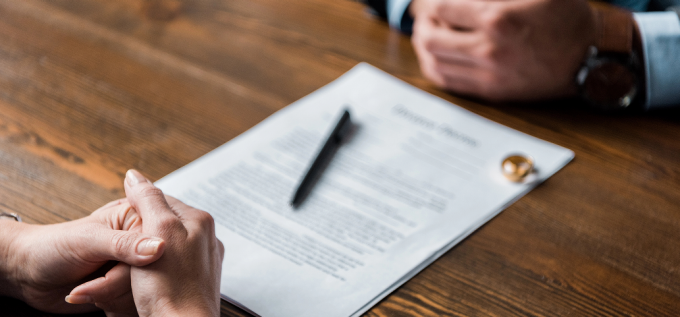
Providing access to the divorce process for those with limited means
Western New Yorkers looking to untie the knot and move forward with their lives, can seek free guidance at a public service initiative called Do-It-Yourself Uncontested Divorce.
The event, a joint project of UB School of Law’s Family Violence and Women’s Rights Clinic and Neighborhood Legal Services of Western New York, is scheduled for Wednesday, November 13th at the Central Library in downtown Buffalo. Registration is available by emailing law-fvwrclinic@buffalo.edu.
At the gathering, staff and student attorneys from the law school clinic will help attendees, who are unable to shoulder the cost of a private attorney, complete the legal forms that initiate divorce proceedings and answer questions about the process. It’s designed for those seeking uncontested and relatively uncomplicated divorces, while those with more complex situations will be referred to suitable resources.
Elizabeth Vinal-Adams ’22, a family and matrimonial attorney at Neighborhood Legal Services (and previously an active participant in the Family Violence and Women’s Rights Clinic as a law student), will give an overview of the divorce process and the applicable New York State laws that govern it.
Event Details
Wednesday, November 13
4 p.m. to 6 p.m.
Buffalo & Erie County Public Library,
Central Library (downtown Buffalo)
1 Lafayette Square, Buffalo NY 14203 [View map]
To Attend: Please email law-fvwrclinic@buffalo.edu.
Elizabeth Vinal-Adams ’22 and Prof. Judith Olin ’85
Though the law doesn’t require the help of an attorney to execute a divorce, Vinal-Adams says, “these forms aren’t easy to understand without help.” Public-service entities like NLS can help potential filers, but there are always more people who need help than attorneys to help them. The Nov. 13 event aims to help bridge that gap.
Private attorneys do this work, of course, Vinal-Adams notes, but many divorce seekers can’t afford to pay their fees. There are also court costs involved, including a $335 filing fee, though she says those at the event will learn how to apply for “poor person status” that enables a court to waive that fee.
Vinal-Adams says that under New York’s no-fault divorce rules, either partner can initiate the proceeding by attesting that the marriage has been “irretrievably broken” for at least six months. Some of her clients, she says, “have been separated for a long time, and they’re just basically getting around to the divorce. It’s pretty much pushing through the process.”
Clinical Professor Judith G. Olin ’85, who directs the Family Violence and Women’s Rights Clinic, will be there along with some clinic students and one or more of the clinic’s staff attorneys.
“This is about access to justice for low-income people who need to get divorced but can’t figure out how to do the paperwork themselves,” Olin says. The New York State Unified Court System provides the necessary forms online, but she says they can be confusing even for the experts. “I know some attorneys who had a no-fault divorce but didn’t want to do the paperwork themselves,” she says. “It’s rather picayune, and certainly for anyone with limited education, there’s a good chance they won’t be able to complete this paperwork on their own. With a law student’s help, they might be able to.
“You can’t just fill out one form,” she says. “It’s easy to get a marriage certificate, but to get a divorce it’s much more complicated.”
Making a clean break in what may have been a long-delayed divorce proceeding, Olin says, can uncomplicate people’s lives in such matters as inheritance and estate issues, Social Security survivor benefits and health insurance coverage. But on a human level, she says, “for a lot of people, it can hold them back from feeling like they can move forward with their lives if they’re still legally married. Even for people who don’t want to get remarried, it can be an emotional barrier.”
